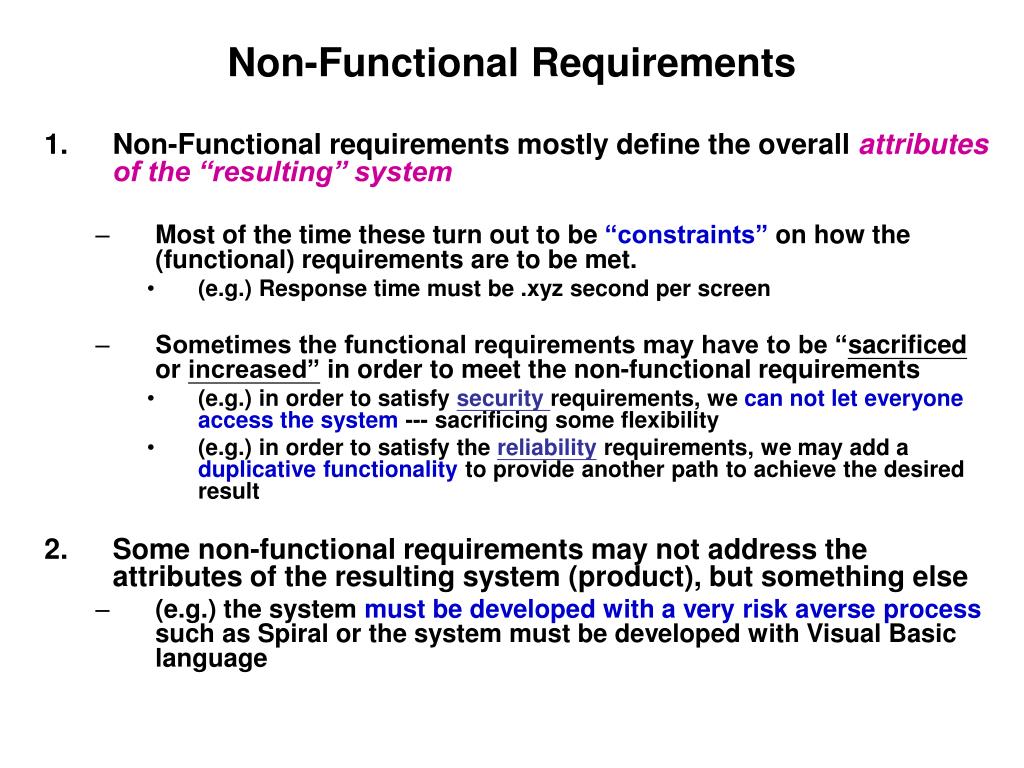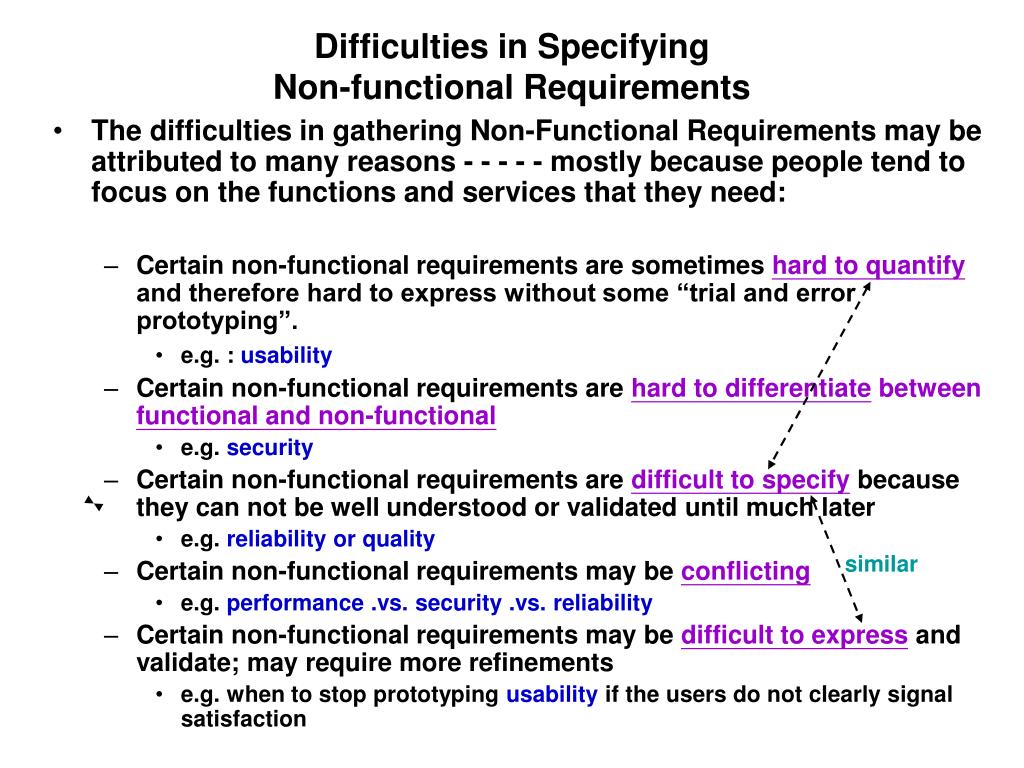

#Non functional requirements how to
How to provide authorized users access to the data.How they will protect the data while it moves across networks and while it is at rest.How to store the responses (in a database, spreadsheet, or plain text file).These can be at the core of the application and include everything from:
#Non functional requirements software
Like the hidden, underwater part of an iceberg, many requirements in software development are for NFRs that are out of sight of the user.

The ability to comply with those SLAs may determine whether the customer’s needs are satisfied or not, ultimately determining if the product is successful or becomes shelfware.Ī nonfunctional requirement is something that can impact either the adoption of, the use of, or the agreements that you have with your customers-all of which could make it more likely that customers will take their business elsewhere.Īs such, NFRs should be top of mind for company product managers and product owners, development teams, organizations undergoing digital transformations, third-party product development outfits, as well as those looking to improve the way employees, partners, and customers access needed data. Or it may require that data be cached or compressed so it can be accessed by users in austere environments with low-bandwidth connectivity.

For example, an SLA may hypothetically require that a system support 100,000 users concurrently across all time zones. NFRs are also essential to meeting contractual service-level agreements (SLAs) between developers and clients (users). The product may perform its function, but if it does not do so within acceptable parameters then usage of the product declines, sometimes to the point where users consider it a hindrance to performing their jobs. Nonfunctional requirements address an application’s scalability, extensibility, stability, security, reliability, and availability for the user.Īddressing nonfunctional requirements (NFRs) is key to the success of any project or program because the best, most feature-rich products in the world will only garner user adoption if they meet the “ilities” named above. How the application goes about doing that-the so-called nonfunctional requirements-can be more important, however, because they determine constraints and restrictions on the design of any system. Nonfunctional Requirements are the Key to User Adoption Software Engineeringįunctional requirements in software development are obligatory because they define what the application does and satisfy system use cases.


 0 kommentar(er)
0 kommentar(er)
